Extended KTP Trip oct 2013
- Lisbeth
- Site Admin
- Posts: 65866
- Joined: Sat May 19, 2012 12:31 pm
- Country: Switzerland
- Location: Lugano
- Contact:
Re: Extended KTP Trip oct 2013
The water hole shot is great 

There are so many springboks around, that you end up almost not noticing them at the end

There are so many springboks around, that you end up almost not noticing them at the end
"Education is the most powerful weapon which you can use to change the world." Nelson Mandela
The desire for equality must never exceed the demands of knowledge
The desire for equality must never exceed the demands of knowledge
Re: Extended KTP Trip oct 2013
Day 8 - 10th October
We continued heading north towards unions end and ran into one of my favourite birds but very difficult to get a photo.
Ant Eating Chat
•Facultative cooperative breeder, meaning that the breeding pair are sometimes helped by juveniles from the previous breeding season.
•The nest is a bowl of dry grass and roots placed in a chamber at the end of a self-excavated burrow, which is usually about 30-150cm long. Both sexes take about 8-10 days to do the excavation, usually digging into the roof of an Aardvark (Orycteropus afer) burrow, sand wall, steam bank or sand quarry.
•Egg-laying season is from August-March, peaking from October-November.
•It lays 2-7, usually 3 eggs, which are incubated solely by the female for about 14-15 days.
•The chicks are fed by both adults and sometimes helpers, leaving the nest after about 15-18 days. They remain dependent on their parents for about 7-10 days more, after which they still use the burrow for shelter, roosting and as a hiding place when they get alarmed.
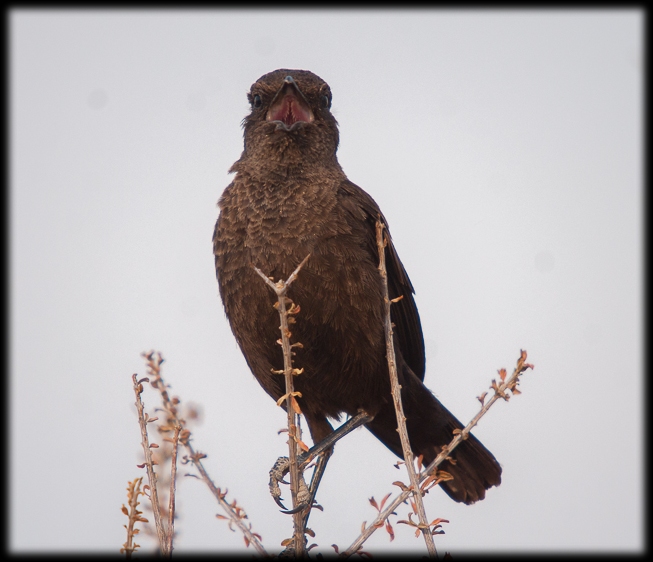
Spot the bird

Sandgrouse
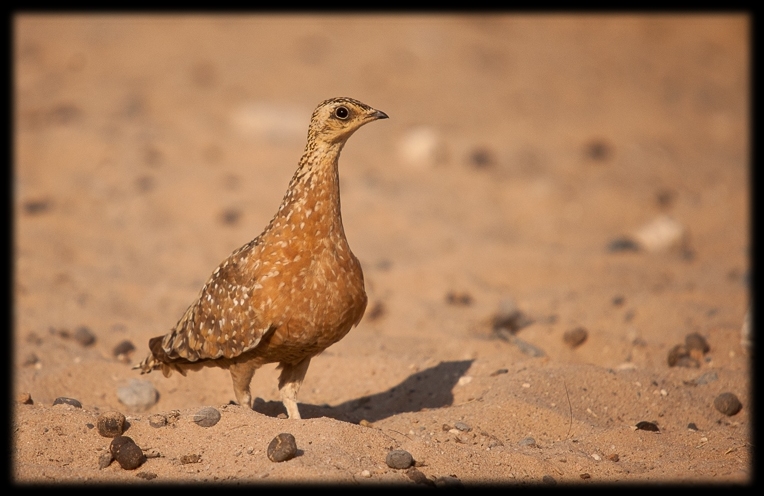
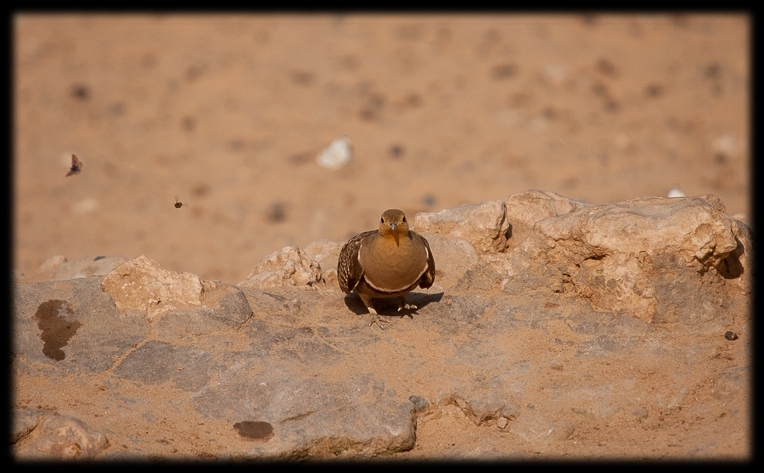
After taking the above at unions end waterhole we continued north to reach the fence line. When there we had some fun with.
Ground Squirrel
It eats plants and some insects and is diurnal (active during the day).
African ground squirrels use their large, bushy tails to shade themselves from the heat.
Sometimes, they will lie with their bellies to the ground and their legs stretched out, taking in the sun.

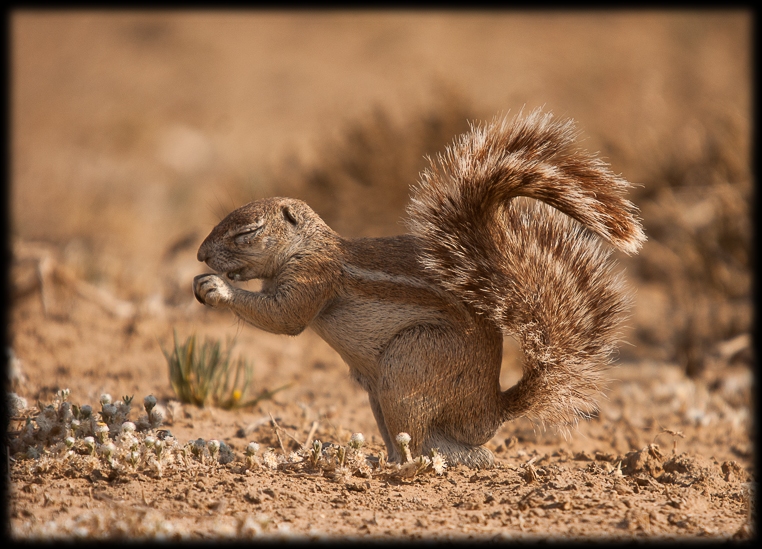

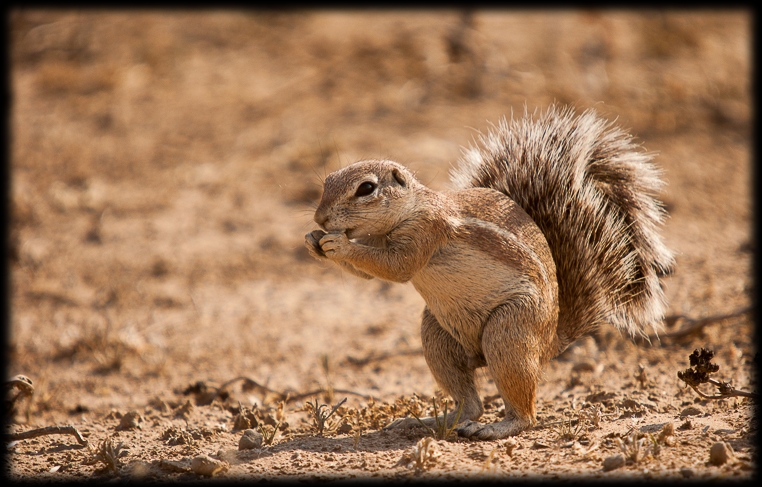
We continued heading north towards unions end and ran into one of my favourite birds but very difficult to get a photo.
Ant Eating Chat
•Facultative cooperative breeder, meaning that the breeding pair are sometimes helped by juveniles from the previous breeding season.
•The nest is a bowl of dry grass and roots placed in a chamber at the end of a self-excavated burrow, which is usually about 30-150cm long. Both sexes take about 8-10 days to do the excavation, usually digging into the roof of an Aardvark (Orycteropus afer) burrow, sand wall, steam bank or sand quarry.
•Egg-laying season is from August-March, peaking from October-November.
•It lays 2-7, usually 3 eggs, which are incubated solely by the female for about 14-15 days.
•The chicks are fed by both adults and sometimes helpers, leaving the nest after about 15-18 days. They remain dependent on their parents for about 7-10 days more, after which they still use the burrow for shelter, roosting and as a hiding place when they get alarmed.

Spot the bird

Sandgrouse


After taking the above at unions end waterhole we continued north to reach the fence line. When there we had some fun with.
Ground Squirrel
It eats plants and some insects and is diurnal (active during the day).
African ground squirrels use their large, bushy tails to shade themselves from the heat.
Sometimes, they will lie with their bellies to the ground and their legs stretched out, taking in the sun.




Re: Extended KTP Trip oct 2013
Day 8 - 10th October - (Continued)
Ground Squirrel
Breeding takes place all year long with a peak in the winter. Cape ground squirrels live in social groups with around 3 or 4 females. However, only one female is in estrous at a time. Once a female mates with a male, there is an average of a 48 day gestation period that ranges from 42 to 49 days. Females have a litter of 1 to 3 pups that are altricial; they are blind and naked when they are born. Pups come out of the burrow at the age of 45 days. Females nurse the young for an average of 52 days, so the pups eat solid food approximately 7 days after leaving the burrow. At the age of 153 days, the pups have reached adult size of 570 g. Pups do not reach sexual maturity until 8 months for males and 10 months for females. Once males reach sexual maturity, they disperse from the burrow, while females remain in the social group.

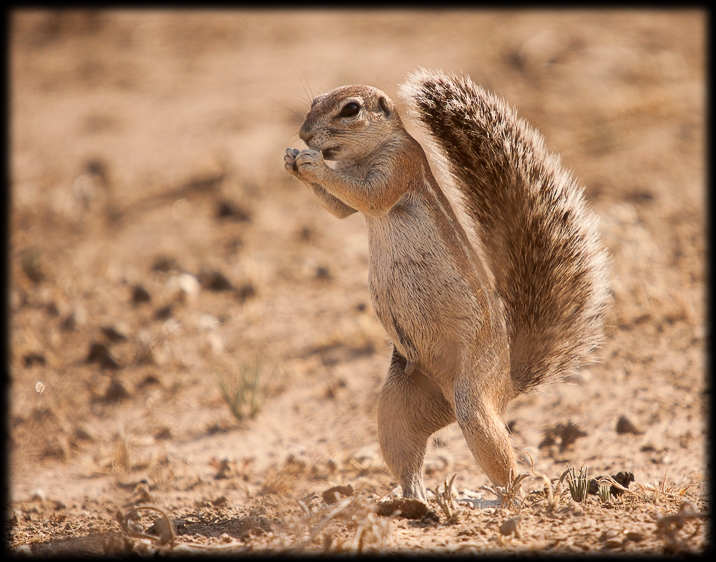


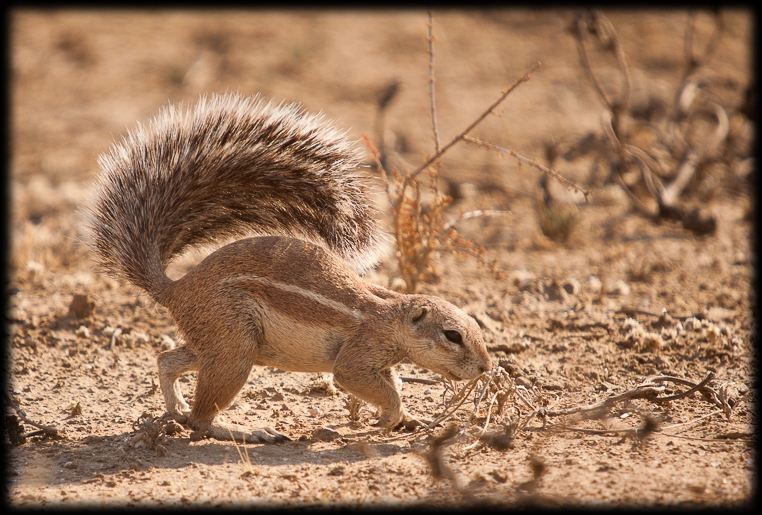
Slender Mongoose
Slender Mongoose can breed several times per year and after a gestation period of 60 - 70 days, 1 - 3 young are born in a den. Males do not take part in caring for their young, it is the sole responsibility of the female.
By the time the young reach 3 weeks old they have their eyes open and at 4 weeks old, they leave the nest. At this point they begin to eat solid food and by the time they are 50 days old they are approximately two thirds of their adult weight.
They are weaned at 7 - 9 weeks old and they are independent at 10 weeks. They reach sexual maturity at 1 - 2 years of age
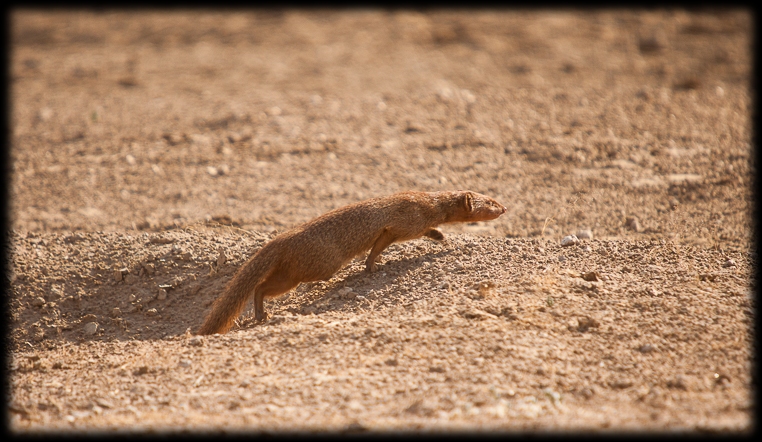
After spending an extended time with these small animals we turned and started heading south back to camp.
GUESS WHAT ANIMAL WE SAW NEXT????
Ground Squirrel
Breeding takes place all year long with a peak in the winter. Cape ground squirrels live in social groups with around 3 or 4 females. However, only one female is in estrous at a time. Once a female mates with a male, there is an average of a 48 day gestation period that ranges from 42 to 49 days. Females have a litter of 1 to 3 pups that are altricial; they are blind and naked when they are born. Pups come out of the burrow at the age of 45 days. Females nurse the young for an average of 52 days, so the pups eat solid food approximately 7 days after leaving the burrow. At the age of 153 days, the pups have reached adult size of 570 g. Pups do not reach sexual maturity until 8 months for males and 10 months for females. Once males reach sexual maturity, they disperse from the burrow, while females remain in the social group.





Slender Mongoose
Slender Mongoose can breed several times per year and after a gestation period of 60 - 70 days, 1 - 3 young are born in a den. Males do not take part in caring for their young, it is the sole responsibility of the female.
By the time the young reach 3 weeks old they have their eyes open and at 4 weeks old, they leave the nest. At this point they begin to eat solid food and by the time they are 50 days old they are approximately two thirds of their adult weight.
They are weaned at 7 - 9 weeks old and they are independent at 10 weeks. They reach sexual maturity at 1 - 2 years of age

After spending an extended time with these small animals we turned and started heading south back to camp.
GUESS WHAT ANIMAL WE SAW NEXT????
- Lisbeth
- Site Admin
- Posts: 65866
- Joined: Sat May 19, 2012 12:31 pm
- Country: Switzerland
- Location: Lugano
- Contact:
Re: Extended KTP Trip oct 2013
I just LOVE the squirrels 

Meerkat?
Meerkat?
"Education is the most powerful weapon which you can use to change the world." Nelson Mandela
The desire for equality must never exceed the demands of knowledge
The desire for equality must never exceed the demands of knowledge
- Lisbeth
- Site Admin
- Posts: 65866
- Joined: Sat May 19, 2012 12:31 pm
- Country: Switzerland
- Location: Lugano
- Contact:
Re: Extended KTP Trip oct 2013
Giraffes?
"Education is the most powerful weapon which you can use to change the world." Nelson Mandela
The desire for equality must never exceed the demands of knowledge
The desire for equality must never exceed the demands of knowledge


